Have you ever wondered what makes a book a best-seller? Is it the author’s skilful storytelling, the characters’ relatability, or the story’s timeless themes?
The top 15 best-selling books of all time have mastered this magic. They’ve captivated readers worldwide, leaving a lasting impact on literature, culture, and society.
In this article, we’ll dive into the stories behind these iconic books. From classical masterpieces to modern phenomena, we’ll explore what makes them so beloved and influential.
Join us on this journey through the most popular books in history!
Top 15 Best-Selling Books (One line Details)
- Don Quixote by Miguel de Cervantes: A Spanish nobleman goes on adventures to revive chivalry.
- A Tale of Two Cities by Charles Dickens: Set during the French Revolution, it explores love and sacrifice.
- The Lord of the Rings by J.R.R. Tolkien: Frodo Baggins journeys to destroy a powerful ring in Middle-earth.
- The Little Prince by Antoine de Saint-Exupéry: A young prince from another planet learns about life and love.
- Harry Potter Series by J.K. Rowling: Harry, a young wizard, battles dark forces at Hogwarts School of Witchcraft and Wizardry.
- The Hobbit by J.R.R. Tolkien: Bilbo Baggins embarks on an unexpected adventure with dwarves.
- War and Peace by Leo Tolstoy: Russian families navigate life during the Napoleonic Wars.
- Pride and Prejudice by Jane Austen: Elizabeth Bennet deals with love and social status in 19th-century England.
- The Catcher in the Rye by J.D. Salinger: Holden Caulfield struggles with growing up in New York City.
- To Kill a Mockingbird by Harper Lee: Scout Finch learns about racial injustice in the Deep South.
- The Da Vinci Code by Dan Brown: Robert Langdon unravels religious mysteries in Europe.
- The Alchemist by Paulo Coelho: Santiago journeys to find a hidden treasure and discovers life’s lessons.
- The Girl with the Dragon Tattoo by Stieg Larsson: Mikael Blomkvist and Lisbeth Salander investigate a cold case in Sweden.
- The Chronicles of Narnia by C.S. Lewis: Siblings discover a magical world filled with adventures and challenges.
- The Great Gatsby by F. Scott Fitzgerald: Jay Gatsby hosts extravagant parties in hopes of rekindling a romance.
1. Don Quixote by Miguel de Cervantes
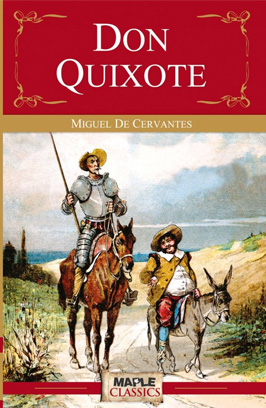
“Don Quixote” was written by Miguel de Cervantes and published in 1605. It is often called the first modern novel. The story is about an old man named Don Quixote who reads too many chivalric tales. He decides to become a knight and go on adventures.
Don Quixote’s journey is full of funny and strange situations. His adventures challenge the line between reality and imagination. This book has had a huge impact on literature, changing how stories are told.
The novel’s mix of humor and deep themes has inspired many writers. Cervantes’ work continues to be important in literary history. “Don Quixote” remains a classic that still influences how stories are written and read today.
2. A Tale of Two Cities by Charles Dickens
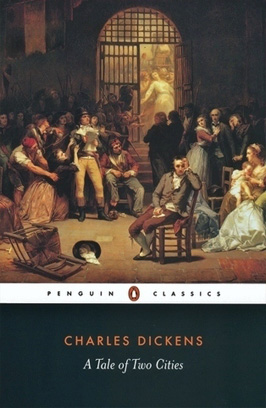
“A Tale of Two Cities” was written by Charles Dickens and published in 1859. The novel is set during the French Revolution and takes place in London and Paris. It follows the lives of several characters as they face the chaos of this historic period.
The story is famous for its opening line: “It was the best of times; it was the worst of times.” Dickens explores themes like sacrifice and justice. The book is known for its dramatic events and memorable characters.
This best-selling novel has a big impact on literature. It shows how political and social changes affect people’s lives. “A Tale of Two Cities” remains a powerful and relevant read, reflecting on the struggles and hopes of its characters.
Read More: Banned Books: 15 Controversial Classics & Why | Explore the Censored
3. The Lord of the Rings by J.R.R. Tolkien
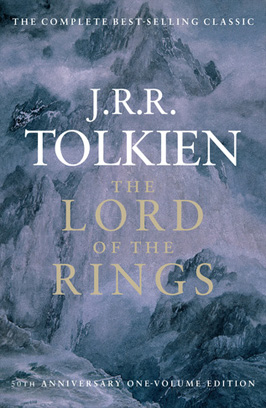
“The Lord of the Rings,” written by J.R.R. Tolkien and published between 1954 and 1955, is a cornerstone of fantasy literature. The novel follows Frodo Baggins on a quest to destroy a powerful ring. Set in the magical world of Middle-earth, it features rich landscapes and diverse characters.
This best-seller book is famous for its epic storytelling and deep themes, like heroism and the battle between good and evil. Tolkien’s detailed world-building and captivating narrative have influenced countless other works in fantasy literature.
The impact of “The Lord of the Rings” is immense. It has inspired movies, games, and a new generation of fantasy writers.
Read more: Why Is ‘Lord of the Rings’ Still So Popular?
4. The Little Prince by Antoine de Saint-Exupéry
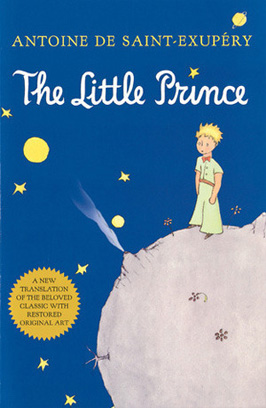
Published in 1943, “The Little Prince” by Antoine de Saint-Exupéry is a beloved classic. It tells the story of a young prince who travels from planet to planet, meeting strange characters and learning valuable life lessons. Each encounter helps him understand more about love and human nature.
This best-seller is known for its simple language but profound messages. The themes of love, loneliness, and the search for meaning resonate with readers of all ages.
“The Little Prince” has been translated into many languages and remains a cherished book worldwide.
5. Harry Potter and the Philosopher’s Stone by J.K. Rowling
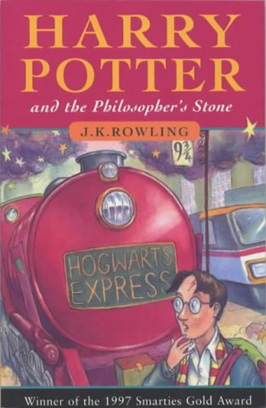
Image Source: goodreads
“Harry Potter and the Philosopher’s Stone,” published in 1997 by J.K. Rowling, introduced readers to a magical world. The story follows young Harry Potter as he discovers he is a wizard and begins his journey at Hogwarts School of Witchcraft and Wizardry.
This best-seller is the first book in the popular Harry Potter series. It explores themes like friendship, bravery, and the fight between good and evil. The book’s imaginative plot and magical setting have captivated readers worldwide.
The success of “Harry Potter and the Philosopher’s Stone” extends beyond the book. It has inspired a blockbuster film series and a massive fan following. The novel remains a significant work, influencing many readers and writers.
Read More: Discover the Philosophers Who Shaped Our Understanding of the World
6. The Hobbit by J.R.R. Tolkien
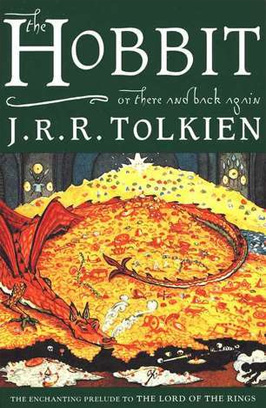
“The Hobbit” by J.R.R. Tolkien was published in 1937. The story is about Bilbo Baggins, a hobbit who goes on an adventure with dwarves. They are trying to get their home back from a dragon named Smaug.
Bilbo faces many challenges along the way. He finds courage and makes new friends. The book is famous for its exciting story and magical world. It has inspired movies and games.
“The Hobbit” is a classic in fantasy literature. Its adventure and charm continue to attract readers of all ages.
Read more: 10 reasons we still love J.R.R. Tolkien’s ‘The Hobbit’
7. War and Peace by Leo Tolstoy
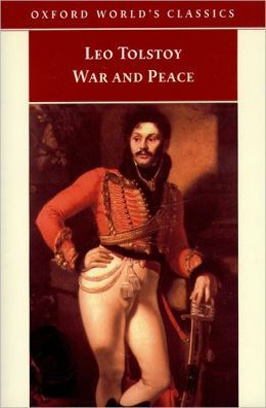
“War and Peace” was written by Leo Tolstoy and published in 1869. It is set during the Napoleonic Wars in Russia. The book follows several families as they deal with war and personal struggles.
Tolstoy’s novel is known for its detailed story and complex characters. It explores big themes like power and love. “War and Peace” has had a big influence on literature.
This book remains important because of its deep look at history and human nature. It’s a must-read for anyone interested in epic stories and historical novels.
Read More: Top 15 Surprising Facts About James Patterson: The Literary Legend Who Changed How We Read
8. Pride and Prejudice by Jane Austen
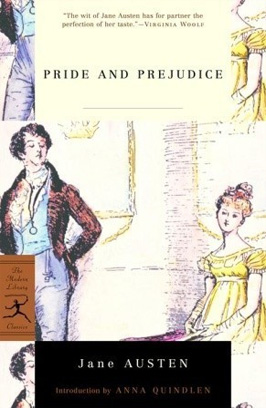
“Pride and Prejudice,” by Jane Austen, was published in 1813. The story is set in early 19th-century England. It follows Elizabeth Bennet as she deals with issues of love and social status.
Austen’s novel is known for its witty dialogue and sharp observations. It explores themes of love, class, and marriage. The book is still loved for its engaging characters and clever writing.
“Pride and Prejudice” has inspired many adaptations. It remains a favorite classic, enjoyed by readers around the world.
9. The Catcher in the Rye by J.D. Salinger
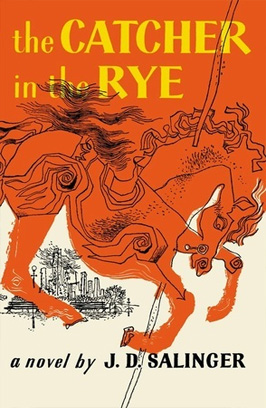
“The Catcher in the Rye” was written by J.D. Salinger and published in 1951. The book tells the story of Holden Caulfield, a teenager who is kicked out of his prep school. He spends a few days in New York City, struggling with his feelings about growing up.
Holden’s journey explores themes of alienation and identity. His story is told in a candid, first-person voice, which makes his experiences feel very personal. The book is known for its honest portrayal of teenage angst.
This classic novel has had a lasting impact on readers. It continues to be relevant for its exploration of teenage struggles and emotional confusion.
10. To Kill a Mockingbird by Harper Lee
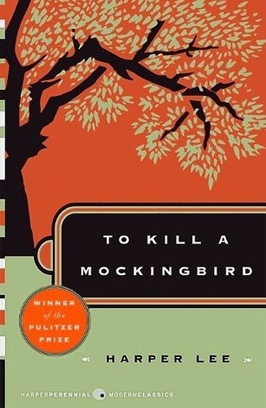
“To Kill a Mockingbird” was written by Harper Lee and published in 1960. Set in the 1930s, the story is narrated by Scout Finch, a young girl in a small Southern town. Her father, Atticus Finch, is a lawyer who defends a black man accused of raping a white woman.
The book addresses serious themes like racial injustice and moral growth. It is praised for its powerful storytelling and strong characters. “To Kill a Mockingbird” has won many awards and remains an important work in American literature.
Read more: 5 reasons why To Kill A Mockingbird is important
11. The Da Vinci Code by Dan Brown
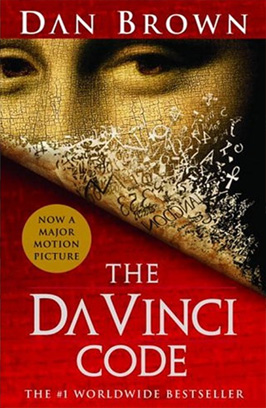
“The Da Vinci Code” was written by Dan Brown and published in 2003. This thriller follows Robert Langdon, a professor of symbology, who is called to investigate a murder in Paris. The case leads him to uncover secrets about the Catholic Church and a hidden code.
The book combines mystery with historical and religious themes. Its fast-paced plot and intriguing puzzles have made it a popular read. “The Da Vinci Code” has also been adapted into a successful film.
Its impact on modern thrillers and popular culture is significant, drawing readers into a world of secrets and suspense.
Read More: Top 15 Facts About the Most Expensive Artworks
12. The Alchemist by Paulo Coelho
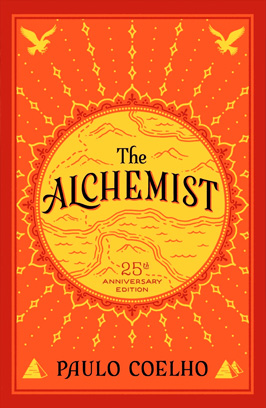
“The Alchemist,” written by Paulo Coelho and published in 1988, is a novel about Santiago, a shepherd boy. He dreams of finding a hidden treasure and sets out on a journey to discover it. Along the way, he learns important lessons about life and following his dreams.
The book explores themes of destiny, dreams, and personal legend. Coelho’s simple and poetic writing style makes the story easy to read and understand. “The Alchemist” has inspired many readers with its message about pursuing one’s dreams.
This best-seller has been translated into many languages and continues to touch readers worldwide. Its wisdom and adventure make it a timeless classic.
Read more: 12 Life Changing Lessons from The Alchemist
13. The Girl with the Dragon Tattoo by Stieg Larsson
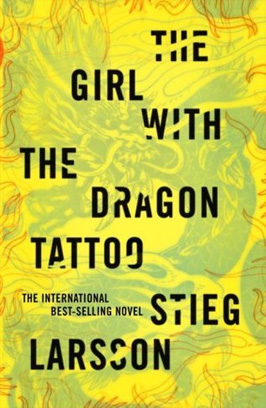
Image Source: goodreads
“The Girl with the Dragon Tattoo,” by Stieg Larsson, was published in 2005. The book follows journalist Mikael Blomkvist and hacker Lisbeth Salander as they investigate a wealthy family’s dark secrets. Their search for a missing girl reveals shocking truths.
The novel is known for its gripping plot and complex characters. It combines elements of mystery, crime, and suspense. Larsson’s detailed writing keeps readers engaged throughout.
This best-seller has had a major impact on the crime fiction genre. Its success led to film adaptations and sparked interest in Scandinavian noir.
14. The Chronicles of Narnia by C.S. Lewis
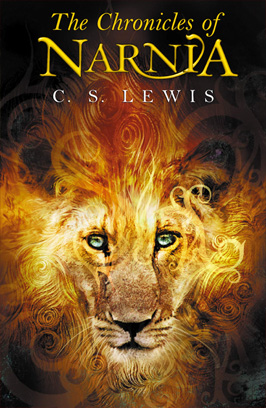
Image Source: goodreads
“The Chronicles of Narnia,” written by C.S. Lewis and first published in 1950, is a series of seven fantasy novels. The most famous book in the series is “The Lion, the Witch and the Wardrobe.” It follows four siblings who discover a magical land called Narnia.
Narnia is filled with talking animals, mythical creatures, and epic battles between good and evil. Lewis’s imaginative storytelling and rich world-building have made the series a favorite among readers.
“The Chronicles of Narnia” has been adapted into films and stage plays. Its timeless stories of adventure and morality continue to captivate readers of all ages.
15. The Great Gatsby by F. Scott Fitzgerald
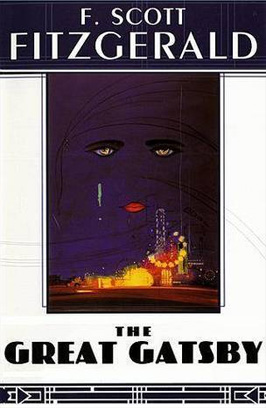
“The Great Gatsby,” written by F. Scott Fitzgerald and published in 1925, is set in the 1920s. It tells the story of Jay Gatsby, a rich man who throws grand parties. He hopes to win back his old love, Daisy Buchanan.
The book explores themes like wealth, love, and the American Dream. Fitzgerald’s writing captures the glitz and the problems of the time. “The Great Gatsby” is famous for its deep characters and rich symbols.
This classic novel is still important today. It shows the quest for happiness and social status, making it a timeless read.
Final note:
So, what have we learned from our journey through the top 15 best-selling books of all time?
These books have stood the test of time, captivating readers across centuries and cultures. They’ve made us laugh, cry, and think deeply about life.
From Don Quixote’s adventures to Harry Potter’s magic, these stories have become part of our shared cultural heritage. They’ve inspired us, educated us, and connected us in ways that few other things can.
Whether you’re a bookworm or just starting your reading journey, these iconic books have something for everyone. So, pick one up and discover why they’re beloved by millions worldwide!
15 FAQ’s ( Frequently Asked Questions):
-
What inspired Miguel de Cervantes to write “Don Quixote”?
Miguel de Cervantes drew inspiration from Spain’s chivalric romances of the 16th century, blending satire and adventure in “Don Quixote” to critique societal norms.
-
How does Charles Dickens use contrasting cities in “A Tale of Two Cities”?
In “A Tale of Two Cities,” Charles Dickens contrasts London and Paris during the French Revolution, illustrating social disparities and themes of resurrection.
-
What languages did J.R.R. Tolkien invent for “The Lord of the Rings”?
J.R.R. Tolkien created languages like Elvish and Dwarvish to enrich the world of Middle-earth in “The Lord of the Rings,” pioneering high fantasy literature.
-
How did Antoine de Saint-Exupéry’s life influence “The Little Prince”?
Antoine de Saint-Exupéry, a pilot, drew on his experiences to craft “The Little Prince,” blending philosophy with a childlike perspective on life and love.
-
What cultural impact did J.K. Rowling’s “Harry Potter” series have globally?
J.K. Rowling’s “Harry Potter” series sparked a global phenomenon, fostering a love for reading among youth and inspiring films, theme parks, and fan communities.
-
How does “The Hobbit” differ in tone from J.R.R. Tolkien’s “The Lord of the Rings”?
“The Hobbit” is lighter and more whimsical than its sequel, focusing on Bilbo Baggins’ personal growth and adventures with dwarves in Middle-earth.
-
How did Leo Tolstoy’s military service influence “War and Peace”?
Leo Tolstoy’s experiences in the military informed his portrayal of war’s impact on individuals and society in “War and Peace,” a sweeping Russian epic.
-
What feminist themes does Jane Austen explore in “Pride and Prejudice”?
Jane Austen critiques gender roles and societal expectations in “Pride and Prejudice,” emphasizing female autonomy and the complexities of marriage.
-
How does “The Catcher in the Rye” challenge literary conventions?
J.D. Salinger’s “The Catcher in the Rye” broke new ground in its raw portrayal of adolescent rebellion and alienation, resonating with generations of readers.
-
What historical events inspired Harper Lee’s “To Kill a Mockingbird”?
Harper Lee drew from her childhood experiences during the Great Depression and racial tensions in the South to craft “To Kill a Mockingbird.”
-
What controversies surrounded Dan Brown’s “The Da Vinci Code”?
“The Da Vinci Code” sparked debate over its fictional portrayal of religious history and art, fueling global interest in the novel’s provocative theories.
-
How does “The Alchemist” reflect Paulo Coelho’s spiritual journey?
“The Alchemist” reflects Paulo Coelho’s search for spiritual fulfillment and personal legend, blending wisdom and adventure in a quest for purpose.
-
What makes Lisbeth Salander a memorable character in “The Girl with the Dragon Tattoo”?
Stieg Larsson’s “The Girl with the Dragon Tattoo” features Lisbeth Salander, a complex hacker and investigator challenging societal norms and gender stereotypes.
-
How did C.S. Lewis integrate Christian allegory into “The Chronicles of Narnia”?
C.S. Lewis imbued “The Chronicles of Narnia” with Christian symbolism and moral lessons, weaving allegorical themes into fantastical adventures for children.
-
How does “The Great Gatsby” capture the essence of the Jazz Age?
F. Scott Fitzgerald’s “The Great Gatsby” vividly portrays the extravagance and disillusionment of the 1920s, critiquing the pursuit of wealth and status.




